Paradigm Persona 3F Speaker System Review Page 2
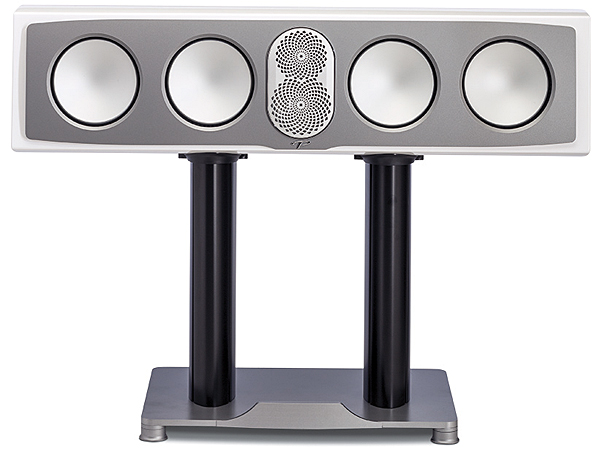
Speakers? What Speakers?
I’d expected that Paradigm would have engineered a level of acoustic performance to match the Persona Series speakers’ luxe fit and finish, and I wasn’t disappointed. For all their visual beauty, whether I was listening to music or watching a movie, the Persona system did that mystifyingly magical act—one that all the greatest speakers aspire to—of disappearing completely from perception and leaving behind only the music or movie soundtrack. As either a stereo pair or as part of the full system, the Persona 3Fs lacked even the smallest taint of noticeable coloration or tonal imbalance that might have drawn my attention away from the sweet reality of the acoustic performance in front of me and pulled me kicking and screaming back into the mundane reality of drivers, cabinets, placement, etc. After several months of living with the Persona 3F system, I still marvel at the fact that, when the system is fired up, the speakers as a physical entity simply don’t exist. (So much for enjoying the luxe fit and finish, eh? You only get that when the system is off.)
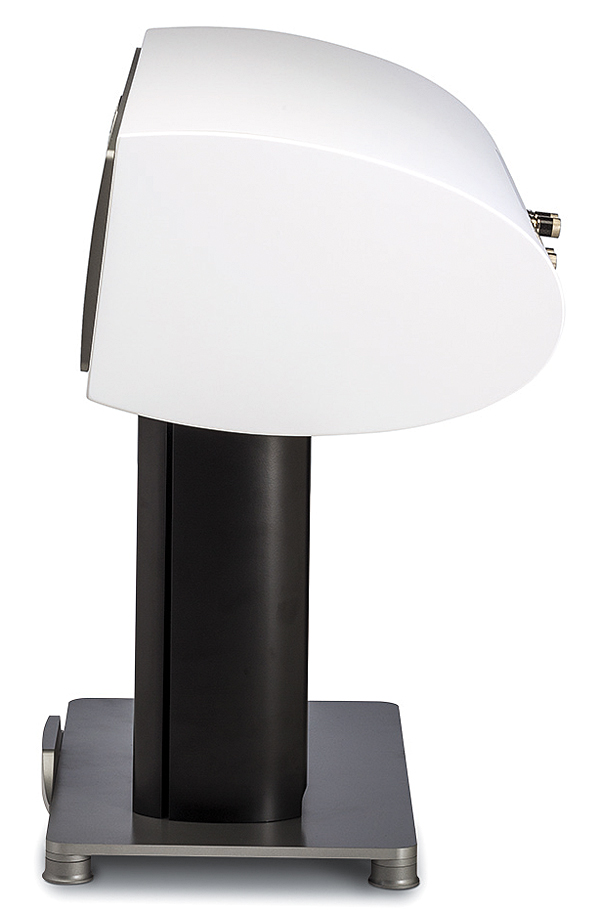
Gregory Porter’s 2016 release, Take Me to the Alley, has a number of exceptional tracks, with two of the most notable being the bonus duets “Holding On [featuring Kem]” and “Insanity [featuring Lalah Hathaway]”. The 3Fs showed them off, beginning with the finger snaps at the start of “Holding On,” which were strong, dynamically crisp, and holographically placed at dead center. The bass beat beneath Porter’s opening vocal was powerful and well projected, but it carried a subtle warmth and inner detail that I hadn’t previously heard on other systems. The big “wow,” however, came when Porter’s low, evocative vocals begin their interplay with Kem’s lighter, slightly higher-pitched contributions, where the well-delineated voices emerged from a the Persona 3F’s stunningly open and natural soundstage. The effect was even more compelling on “Insanity” during the back and forth between Porter’s smooth baritone and Hathaway’s soaring, sultrier phrasings. Meanwhile, the upper-register notes from the piano in the background on this track were succinct and sharp, while the lower-register keys were open, full, and sustained. The plucks of the guitar strings on this track were also beautifully well defined, and the tapped cymbal fixed in the left channel offered an appropriately characteristic shimmer.
A synth-infused pop track like “No Harm Is Done [featuring Tunji Ige]” on Christine and the Queens’ eponymous album was a great demo to experience the Persona 3F’s powerful dynamics and immensely extended soundstage. This song is a sonic free-for-all with an absolutely pounding bass beat, but it never caused the 3Fs (sans Persona SUB) to show any signs of distress or fatigue regardless of the volume level. In fact, my ears gave up before the woofers in the Persona 3Fs did. During the refrain, Christine’s vocals went from rock-solid dead center to suddenly expand out (with overdubs) in a contiguous arc that stretched from my left ear around the front of the room to my right ear—as well as from floor to ceiling. At the same time, a sparkling, sprite-like sound effect (I have no idea what instrument or synthesizer it comes from) darted around, appearing here, then reappearing there, at various heights along the same arc. The sound effect’s rapid fire of attack/decay, attack/decay, attack/decay (something akin to a blend of tiny tinkling bells with a salt shaker and breaking glass) was managed brilliantly (pardon the pun) by the Persona 3Fs—the speakers’ beryllium-bedecked tweeters seemed to be a match made in heaven and never allowed the sound to lose detail or become annoying or fatiguing. Ige’s vocals during his hip hop interlude are also split into two slightly different versions that come from the far left and right front corners in the room; and, at times, the minor differences made the emphasis shift dramatically from side to side. There’s no way the effect would have been anywhere near as mind-bending as I heard on speakers with a less expansive soundstage.
 To get a sense of how the Paradigms handled a more natural acoustic, I dialed up the 2016 release of Mozart Piano Concertos 19, 20, 21, and 23 by Sir Neville Marriner & the Academy of St. Martin in the Fields (someone please tell him it’s OK to come inside) with HaiKyung Suh masterfully playing piano. This recording didn’t present quite as immersive a soundstage as the Christine and the Queens selections I auditioned, but the Persona 3Fs still provided a spectacular sense of depth and a sharply focused image that vividly highlighted the orchestra’s layout. The violins at left sounded sweet, with no hints of brittleness or breakup. Likewise with the flutes at center left—the 3Fs gave a true sense of their flowing, breathy character. The endearingly visceral huff of the bassoons was so delicately articulated that, although notably coming from behind the larger stringed instruments, the sound managed to retain its soft-and-low forcefulness. The timbre of Suh’s piano, positioned prominently at center front, was spot on throughout its range. The tinkling of the hammers on the strings in the piano’s upper register was scintillating in the rapidity of the attacks and decays. This is the point when less well-mannered speakers can drive virtual nails through your ears’ tympanic membranes, but not here. The much longer, more nuanced decay of the lowest keys’ strings was also easily heard. The Persona 3Fs were merely re-creating the sound of a beautifully tuned piano in an orchestral space with open and airy acoustics. Paradigm claims there’s a crossover network in the Persona 3Fs; but if there is, I couldn’t detect it. The Persona 3F’s output just blends together into one sonically cohesive whole.
To get a sense of how the Paradigms handled a more natural acoustic, I dialed up the 2016 release of Mozart Piano Concertos 19, 20, 21, and 23 by Sir Neville Marriner & the Academy of St. Martin in the Fields (someone please tell him it’s OK to come inside) with HaiKyung Suh masterfully playing piano. This recording didn’t present quite as immersive a soundstage as the Christine and the Queens selections I auditioned, but the Persona 3Fs still provided a spectacular sense of depth and a sharply focused image that vividly highlighted the orchestra’s layout. The violins at left sounded sweet, with no hints of brittleness or breakup. Likewise with the flutes at center left—the 3Fs gave a true sense of their flowing, breathy character. The endearingly visceral huff of the bassoons was so delicately articulated that, although notably coming from behind the larger stringed instruments, the sound managed to retain its soft-and-low forcefulness. The timbre of Suh’s piano, positioned prominently at center front, was spot on throughout its range. The tinkling of the hammers on the strings in the piano’s upper register was scintillating in the rapidity of the attacks and decays. This is the point when less well-mannered speakers can drive virtual nails through your ears’ tympanic membranes, but not here. The much longer, more nuanced decay of the lowest keys’ strings was also easily heard. The Persona 3Fs were merely re-creating the sound of a beautifully tuned piano in an orchestral space with open and airy acoustics. Paradigm claims there’s a crossover network in the Persona 3Fs; but if there is, I couldn’t detect it. The Persona 3F’s output just blends together into one sonically cohesive whole.
The Lionization of the Persona C
Integrating five speakers (and a sub) into a single, cohesive, enveloping environment is a daunting task to achieve. This Persona Series system, though, had things heavily (taken literally and figuratively) in its favor. As noted earlier, the Persona C is one dead-serious center channel. In my opinion, most systems prioritize compact size over performance and under-engineer their center channels in comparison with the front speakers. Thankfully, Paradigm’s engineers and designers said the politely Canadian version of “F it” and proceeded to build what is essentially a horizontal, and even heavier, Persona 3F. The result is an awesome, if large, center channel that, like the Persona 3F it’s modeled on, absolutely vanishes in acoustic space.
In The Girl with All the Gifts, for example, the dialogue— regardless of its placement across the front soundstage—was clear and forceful, with the LCR speaker complement being so well blended that I never sensed any audible clues that there were three distinct sources in front of me. The same was true of the important-plot-detail-revealing car crash in Incarnate. The subtle noises, especially to the center right, were part of a flawless panorama across the front of the room. Most impressive of all, though, was the system’s performance with the movie Lion. The first half of the movie follows Saroo, a five-yearold Indian boy who tragically gets lost in Calcutta, 1,600 kilometers from his home; at this point the story is driven more by visuals and soundscapes than by dialogue.
The entire system beautifully handled the crucial reproduction of the multitude of subtle sonic details that are the building blocks of the soundtrack. When Saroo desperately tries to find his brother, Guddu, or his mother in the over-crowded Calcutta train station, the buffeting sounds of the jostling mob were as present and as clear in the Persona C as it was in the other channels. Despite the cacophony, when Saroo painfully screams “Guddu!” and “Mum!” above the crowd, his tiny voice was pointedly clear amid the mass of humanity surrounding him.
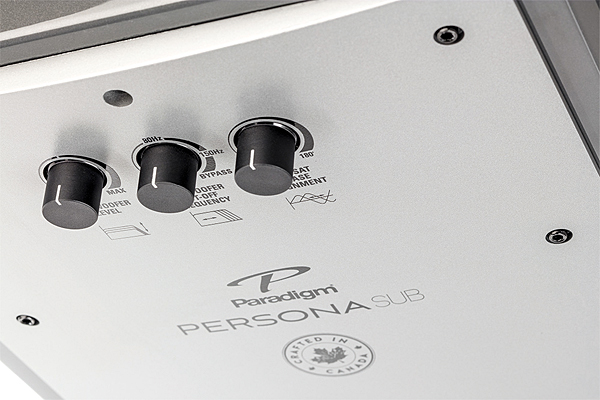
Not long after, Saroo is forced to run from a group of men who are trying to capture the homeless children sleeping in the halls of the train station. The sad sound of the violin in the score, along with the echoing noises from the scared, scrambling children as they are taken, played across the front speaker trio without a break or change in tone. Then, dead center, the sounds of Saroo’s running footsteps and heavy breathing were small but very audible. The hopelessness of the situation is then punctuated by the sound of smoke being quickly and disgustingly exhaled from the mouth of the guard at the end of the tunnel. The Persona system rendered each of these effects with appropriate subtlety and a naturalness that put me right into the scene. Later, there’s a reserved but heart-rending scene in which Nicole Kidman, as Sue Brierley (Saroo’s adoptive mother), talks with a now-grown-up Saroo (Dev Patel) about her decision to adopt children. The way the Persona C highlighted the dialogue without losing the intimacy and grief present in the conversation was one of many shining moments of the Persona C’s greatness. Although I wanted to lean in to be part of the intimacy, I didn’t need to thanks to the tonal balance and clarity. And that clarity and timbre-match with the rest of the system remained remarkably consistent across the width of the seating area in my theater.
As wonderful as the Persona C was, the Persona Bs were also fantastic in their role as surround speakers. Early in The Girl with All the Gifts, there’s a scene that starts in one end of a long hallway that contains the children’s rooms. As the camera proceeds down the hallway, the ceiling lights “snap” on, one after the other. The sound of the lights ominously moved through my room across the ceiling. Not long after, as “the girl” is eating grubs, the ominous background music was everywhere in the room, including above me, with no sense of directionality or speaker placement. Much later, when the sounds of the feral kids as they surround one of the adults—with evil intent—was so real that I almost crapped myself. (Seriously.) After I gained my composure, I wrote in my notes about the way the soundfield extended up and into the ceiling.
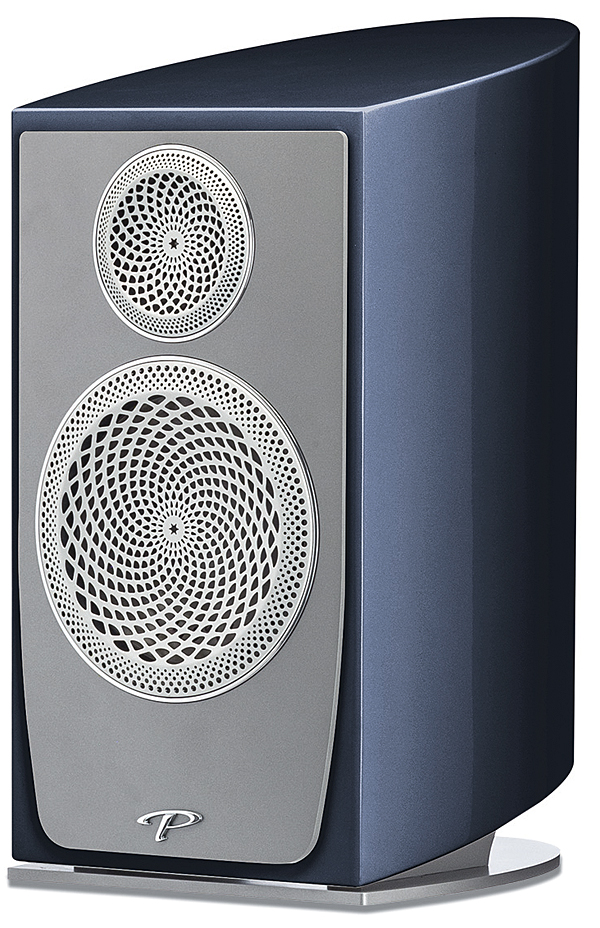
It made the performance of the Persona 3F system the closest thing to the sense of Dolby Atmos envelopment that I’ve experienced without actually having Dolby Atmos. I noticed the same effect with the wonderful soundtrack in Moonlight. Invariably, whenever music became the dominate element in a soundtrack, it seamlessly filled the room— around me, as well as above me— in a way that was very reminiscent of what you’d hear with a system featuring overhead speakers. Wide-open outdoor scenes, such as when the kids are playing soccer, had much the same results in the delivery of ambient effects. Returning again to Lion, I watched the scene at the beginning of the movie when the young Saroo is standing in the middle of a swarm of butterflies (or moths), marveling at the beauty of it all. The Persona system made the sound of that enveloping swarm a reality in the room—forming a complete circle at ear level and even extending into a dome of sound above.
The Persona SUB, not surprisingly, was able to thoroughly energize the room with bass when asked to do so. But, more surprisingly, it blended with the rest of the system into nonexistence. With the low revving of the engines and the massive power of Furiosa’s semi truck in Mad Max: Fury Road, the Persona SUB absolutely rose—or should I say, lowered—itself to the challenge. As a result of the ARC room correction software, there was never a point at which the Persona SUB either lost or gained undue emphasis from 80 Hz on down. Although it’s been a long time since I’ve taken a listen to the classic depth charge scene in U-571, I think the Persona SUB did the most accurate and intensely affecting re-creation of the underwater explosions above and below the water. (OK, I’ve never really been depth-charged, so I can’t say with 100 percent certainty about the accuracy, but it was emotionally effective.)
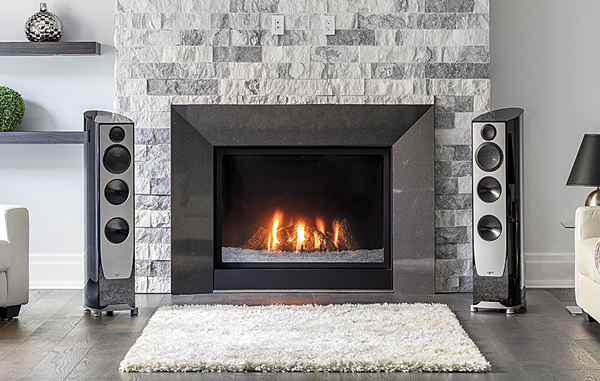
Conclusion
What can I say? There are damn few speaker systems that I’d consider selling my children—or myself—for medical experiments to acquire. But the Persona 3F and the rest of the speakers in this Paradigm Persona system are so astounding, so unequivocally brilliant in their performance that they will convince your ears that they don’t exist, despite what your eyes will try to tell you. OK, maybe that’s not totally worth selling my children for, but it’s certainly worth the price tag. Yes, I’ll say it. $31,000? Is it a true value in a loudspeaker package? Or is it a total luxury for your eyes and ears? Take your pick. Either way, you’d be correct.





























































